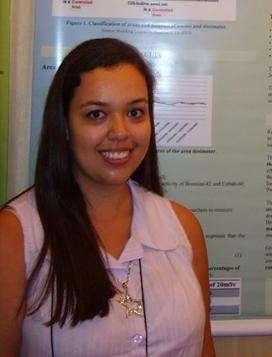Program Information
Experiment to Access Iodine-125 Leakage in Different Vials
C Daruich de Souza1*, M Chuery Martins Rostelato1 , C Zeituni1 , O da Costa1 , B TEIGA RODRIGUES1 , A Castro Gonzalez1 , J de Oliveira Marques1 , (1) Nuclear and Energy Research Institute, Sao Paulo, Sao Paulo
Presentations
TU-L-GePD-T-4 (Tuesday, August 1, 2017) 1:15 PM - 1:45 PM Room: Therapy ePoster Lounge
Purpose: there are several challenges when developing a laboratory to produce radioactive sources. From choosing a prototype to radiation safety, the task is enormous. During the past 15 years, our research group is developing a laboratory to produce iodine-125 seed. These seeds are placed inside the cancer and release radiation directly in the target. The whole production line is full of new process and innovations. Among those, a new chemical reaction that deposit iodine-125 onto silver (core) was developed. This paper presents a comparison between vials in order to access their capability to retain radioactive iodine. Also, the fixation percentage in a silver core was taken into account. This information will be used to select a vial to be implemented at the iodine-125 sources manufacture laboratory.
Methods: Vials made with polymers and glass was tested. Iodine-125 were placed in the vials overnight at rt. Seven vials with different materials (glass, dark glass, and plastics) were evaluated.
Results: The selected vial (borosilicate glass 1 mL total volume) loss 17.61% of iodine in 24 hours and presented the highest iodine intake. It was noticeable that the vial material influenced both iodine intake and iodine loss. The goal is to maximize the reaction yield to result in a less costly product.
Conclusion: we have selected the best vial for our reaction in reagards to leakage and yield.
Contact Email:
